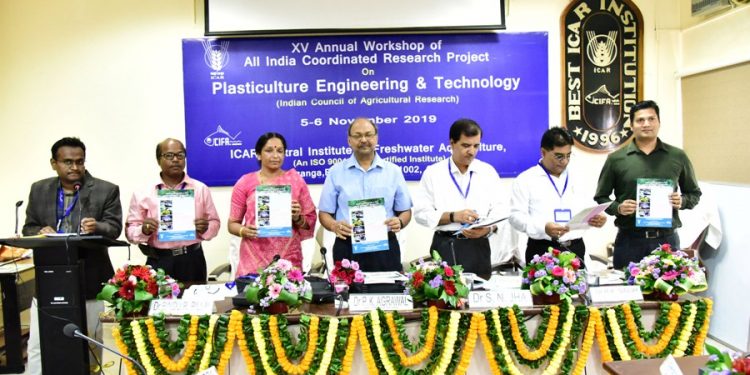Bhubaneswar: The application of plastic in agriculture offers huge opportunity for modernising Indian agriculture. This was revealed at a workshop of Indian Council of Agricultural Research (ICAR)-AICRP on Plasticulture Engineering and Technology (PET) organised at ICAR-CIFA, Kausalyaganga here Tuesday.
Plasticulture is one of the innovative applications of plastic – the combination of two words, plastics and agriculture. As per 2015 data, per capita consumption of plastic in India is 9.7 kg/person which is far below the world average of 45 kg/person. So, the application of plastics in agriculture offers huge opportunity of modernising Indian agriculture. It is defined as the use of plastics in plant and animal agriculture.
A variety of plastic materials and end products are used in plasticulture applications like water conservation, irrigation efficiency, crop and environment protection as well as end product storage and transportation.
ICAR, New Delhi created four centres in as many states for ‘All India Coordinated Research Project (AICRP) on Application of Plastics in Agriculture’ in 1988. One centre was opened at ICAR-CIFA, Bhubaneswar and its mandate given was “Application of Plastics in Aquaculture”. Recently, the name of the AICRP has been rechristened as AICRP on Plasticulture Engineering and Technology (PET) and it now has 14 centres spreading in most of the agro-climatic zones of the country.
In the workshop, ICAR-CIFA director Bindu R Pillai highlighted the major achievements of the PET Scheme since its inception in 1988. She applauded the work of the PET team for their dedicated services to the farming community. She mentioned the name of some gadgets, such as FRP carp hatchery, silo rearing system, fish feeders, aquaponic system, FRP pabda hatchery and others which have immense potential in the sector.
She said that the Green Revolution with its emphasis on high-yielding variety seeds, fertilizers, pesticides and better methods of farming, swept like a wave into the Indian countryside. It turned us from being deficient in food grain production to self-sufficient in the area.
Plasticulture applications are considered the most important indirect agriculture input which results in moisture conservation, water saving, reduction in fertilizer consumption and plant protection through use of nets. Use of innovative packaging solutions helps in increasing shelf-life of fruits and vegetables. Plastic can play a major role in energy conservation. It requires minimum energy in production and conversion to finished products. Plastic has definite advantages over conventional materials because it has several properties.
B C Mohapatra, Principal Scientist & Principal Investigator, AICRP, ICAR-CIFA, Bhubaneswar presented a detailed report of the scheme covering all 14 cooperating centers of the country and highlighted the success stories and achievements from it.
He said that the major thrust areas of the project are on surface covered cultivation and development of package of practices for better utilisation of covered area, rainwater harvesting or water storage pond lining, efficient utilisation techniques for stored water including pressurised irrigation and gravity fed micro-irrigation.






































